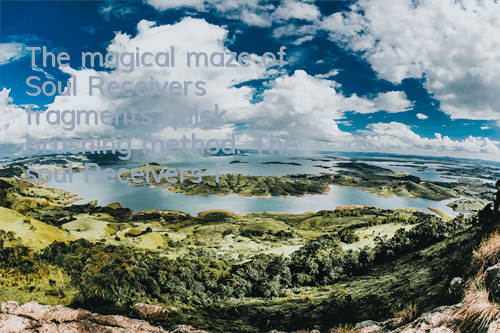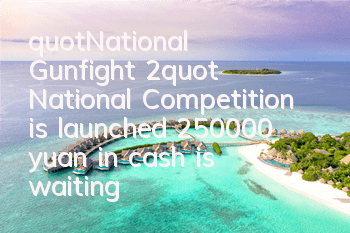The background in "Assassin's Creed" is quite huge, and some are even real historical events. Below, the editor will introduce the location, characters, events and group background information of "Assassin's Creed". Come and have a look.
It has been sorted out for nearly a week. AC1 has a very rich sense of history, but unfortunately the game does not have a database setting. Out of interest in history and Assassin's Creed, some information entries were sorted out as much as possible. Due to my limited ability and the completion of it alone, there are inevitably some omissions and mistakes. I hope you can forgive me.
References
Baidu Encyclopedia
Wikipedia
Assassin's Creed Chinese Wiki
Baidu Travel
Mafengwo
【Chinese translation】Official novel: Assassin's Creed's Secret Holy War
Assassin's Creed: Revelation Database
Age of Empires 2: Conqueror Database
Map: Impression Geography
Fashion Travel
Deviantart
Element Classification
Location, event, person, group
Location: Damascus-Introduction
The word "Damascus" is an Arabic recorded by the Greeks in Greek, meaning "handshop". In Arabic, the city is called Dimashq ash-Shām, which originates from the Arabic meaning of "north".
Damascus is located at the foot of the Antileba Mountains, at the confluence of the Barrada River and the Avash River. The water and geography determine the location and function of Damascus. Early immigrants were naturally attracted to such a place. The Bayrada River in the East Lebanon Mountains, which originated from the former Lebanon Mountains, disappeared into the desert after covering a large fertile oasis. This land has supplied a large population for thousands of years. Damascus is built on a platform with an altitude of 690 meters. Looking down at the Baydara River, the original residential area seemed to be located in the east of the old city. The city and oasis developed together. After a period of time, Damascus occupied the position of dominating the smaller residential areas nearby.
The water supply is guaranteed, the land is fertile, and the conditions of talent make Damascus self-sufficient. Located on the edge of the desert and at the eastern end of the only shortcut to the former Lebanese Mountains, Damascus is the trading center for caravans to set off and terminate. After the rise of Islam, Damascus was the starting point of the Hajj road leading to the holy places of Muslim on the Arabian Peninsula.
For more related content, please pay attention to: Assassin's Creed Zone
Article content navigation
Location: Damascus-Umayya Mosque
Umayya MosqueIt was originally the Temple of Jupiter during the Roman Empire, and later it was changed to St. John's Cathedral (memorial to John the Baptist).
After Syria conquered the Arabs in the 7th century, St. John's Cathedral was once still used as a Christian for worship. In 705, Caliph Walid I of the Umayyad Dynasty accepted the church and converted it into a mosque. Walid I recruited craftsmen from Byzantine, Syria, Egypt and other places, and built the mosque in ten years.
During the transformation process, the rectangular layout of the church was preserved, but it is unknown how much of the rest was retained. What is certain is that there are two minarets in the Umayyad Mosque that were originally the church's viewing tower, and the third light tower was built by Walid I.
Location: Damascus-Hamidia Bazaar
Hamidia Bazaar is the largest bazaar in Syria, located in the old city of Damascus.
Location: Damascus-Damascus Castle
Damascus Castle is a large medieval castle located in the northwest corner of the Old Town of Damascus, Syria
Location: Damascus-Saint Paul Church
Legendary St. Paul, the apostle of Jesus Christ, entered Damascus through this gate. Later, when St. Paul was chased by Christian enemies, he was placed in a basket by his fellow parishioners and landed at Casanmen from the castle in Damascus, thus escaping from Damascus. Later, St. Paul's Church was built here.
(I went all over Damascus and couldn't find the exact location. What's going on?)
Location: Damascus-Nurdin Mausoleum
(Why can't I find an introduction in Wikipedia)
Location: Aka-Introduction
Akka writes Acre in English, while locals write Akko. According to Greek mythology, Hercules Heckles was injured while capturing a beast and was bleeding profusely. He found a herb to heal the wound by a friend's recommendation. This herb comes from Aka City. Therefore, the Greeks used Aka (treatment) to match this small town. This is of course just a statement from the Greeks. What really has texts to test is that the Egyptians began to use the title Aka as early as around 2000 BC. On the pottery jars and pottery plates in Egypt at that time, the pharaohs wrote words cursing the enemy in hieroglyphs, and a total of sixty-four place names were mentioned, including Aka. People infer from this that this small town has a history of about four thousand years.
Aka is located on a headland at the northern end of the formerly known as Aka Bay and now known as Haifa Bay. It is a natural deep water harbor. The ancient Greeks had long discovered that this was the gateway to the East from Europe. The Eastern Mediterranean coast has long regarded this placeTo transport the abundant grain to Europe. Because of its important geographical location, Aka's history is an eventful history. The struggle between siege and counter-encirclement, occupation and counter-occupation, rule and counter-rule never ceased. The struggle involves not only West Asia and North Africa, but also Europe. The number of countries, nations and dynasties involved is extremely rare in world history.
Location: Aka-Ancient Coastal City Wall
From the 10th century BC, King David of Hebrew, King Sinahrib of Assyrian, Alexander the Great of Macedonia, and King Ptolemy II of Egypt successively captured Aka. Some Greeks who followed Alexander the Great and Ptolemy II's expedition, saw that Aka was in a dangerous terrain and a warm climate, so they settled here and built Aka in the imitation of Greek city-states. They cleared the reefs along the coast, built breakwaters on the coast, and built stone walls around the settlements. In this way, Aka gradually developed from a small village into a harbor and a trade center connecting West Asia, North Africa and Southern Europe.
Location: Aka-Hospital Hall of the Knights
After losing to Jerusalem, the Knights of the Hospital retreated to Akah and built a military fortress here to wait for a comeback. In addition to strategic considerations, the hall also serves as a means of setting up and caring for hundreds of believers who have trekked from the European continent.
Location: Jerusalem - Introduction
Jerusalem is a historic city located in the Near East Levant. It is geographically located in the mountains of Judah, between the Mediterranean and the Dead Sea. It is known as the holy city of the three major religions (Judaism, Christianity and Islam). It is located at the top of the Judean mountainous area, at an altitude of 790 meters. It is one of the centers of ancient religious activities. Judaism, Christianity and Islam, respectively, regard the city as a holy place according to their own religious legends.
Since King Solomon built a temple in Jerusalem in the 10th century BC, Jerusalem has been the center of Judaism and the most sacred city. Christians also attach great importance to Jerusalem because according to the Bible, it is the place for Jesus' crucifixion, burial, resurrection and ascension. Islam also lists Jerusalem as the third holy place after Mecca and Medina to commemorate Mohammed's night journey and build two mosques on the Temple Mount - the Alxa Mosque and the Dome Mosque to commemorate this sacrament.
Location: Jerusalem-Domestic Mosque
The Dome Mosque is located in the Old Town of Jerusalem. It is a famous mosque in Islam and a holy place of Islam. It is located in the holy place of Islam in the eastern part of the Old Town of Jerusalem, about 300 meters north of the Alxa Mosque. Muslims call it "Sahre", which means "rock", so it is also called "rock mosque". For hundreds of years, it has been one of the most famous symbols of Jerusalem.
Location: Jerusalem-Alqsa Mosque
The Al-Aqsa Mosque is the third largest holy mosque in Islam. Its status is second only to the Holy Monastery of Mecca and the Prophet Monastery of Medina. Located in the southwest corner of the inner courtyard of Sharif in the east of the Old Town in the East of Jerusalem. In Arabic, "Aksa" means "extremely far", so it is also called "far temple". The name originated from the legend that the prophet Muhammad of Islam was accompanied by the angel Kiplil from Mecca on a horse to Jerusalem to climb the sky and travel to the seventh level of the sky one night in July 621.
Location: Jerusalem-Wailing Wall
The Wailing Wall is a section of the Second Temple Guardian of the Old City of Jerusalem in the ancient Jewish Kingdom, and is also the only remaining site of the Second Temple Guardian. It is about 50 meters long and about 18 meters high, and is made of large stones. Judaism regards the wall as the first holy land, and believers must weep when they come to the wall to express their condolences to the ancient temple and look forward to its recovery. For thousands of years, when Jews who were wandering in every corner of the world returned to the holy city of Jerusalem, they would come to this stone wall to pray in a low voice and cry about the suffering of exile, so they were called the "wailing wall".









